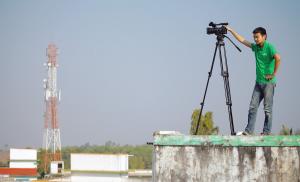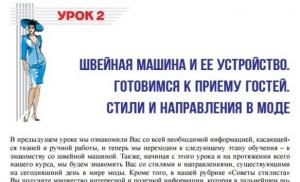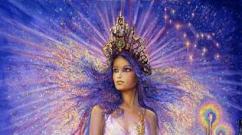New scientific journal Tartaria Magna. Tashi Drepung Monastery Gomang Datsan Goman Datsan India
Photo report from Drepung Monastery (Goman-datsan) digadog wrote in June 22nd, 2012

At the beginning of 2012, he sent a scientific expedition to India to study the phenomenon of Buddhist pilgrimage. The focus of the researchers' research was not only pilgrimage to visit holy places for Buddhists. Much earlier, an educational pilgrimage began from Buryatia to India. What is Buddhist monastic education and why do the most persistent Huvaraks travel so far for it?

According to expedition member Nikolai Tsyrempilov, “in Tibetan Buddhism of the Geluk tradition, special emphasis is placed on logical thinking and knowledge of classical texts. In the early period of its history, Buddhism was only one of the many religious and philosophical systems of India, and Buddhists had to defend the truth of the postulates of their religion in heated discussions. The monks were required to be able to use impeccable logical argumentation to prove their own rightness and the wrongness of their opponents’ views.”

Thus began Buddhist education, which requires knowledge of classical texts along with logic. In subsequent stages of their history, Buddhists faced less and less need to defend their views, and philosophical debates became an effective educational technique. In the Tibetan monasteries re-established by refugees in southern India, the level of religious education is maintained at an extremely high level. Without mastering the art of argumentation and memorizing extensive texts, obtaining a monastic education is impossible.
In 1996, several of the first Buryat youths who studied in various datsans of Buryatia arrived in India to, like their famous ancestors, begin studying in the best religious schools of the Buddhist world. Today, these guys remember the first years of their life in the Indian tropics with nostalgia, because for many of them everything is now behind them: the painful adaptation to the sweltering heat, to the endless summer rains, to serious illnesses and to intense study in a foreign language.

But then many could not withstand all these difficulties that fell upon their young heads at once. Some couldn't stand the climate, while others couldn't stand the academic demands. Those who remained were greatly helped by the support of the Tibetans, among whom the memory of the old Buryat lamas who had once been their teachers was still alive.

In the 20s of the 20th century, the famous Buryat lama Agvan Dorzhiev sent several young guys to Tibet to comprehend the wisdom of Buddhist teachings. After they heard rumors about the total destruction of Buddhism in their homeland and the tragic death of their teacher, they realized: there was no turning back. After decades of study, without support from family and friends, Buryat monks reached the heights of Buddhist learning. Atsagat Tubden Nima became the main guardian of monastic morality in the largest of the monasteries of Tibet - Drepung; Tunkinsky Legden was respected for his deep knowledge of Buddhist logic and was invited to take the throne as abbot of the famous Homan school. And finally, Agwan Nima, like his comrades, received the highest academic degree of the Tibetan Buddhist world - Geshe Lharamba. The first two geshes died tragically during the Cultural Revolution. Geshe Agwan Nima, following the Dalai Lama, fled to India, where the mission of saving Buddhist knowledge among Tibetan refugees fell on his shoulders. He lived to an old age and passed away just a few years before a new generation of Buryat Huvaraks came to India for the same thing that he had come to Tibet for several decades earlier.
According to the unanimous recognition of the Buryat huvaraks, the fact that they were well received in Goman is explained by the fact that in those years the memory of the Buryat lamas was still alive.

The Tibetans considered it a sacred duty to accept and help the young fellow countrymen of Geshe Agwan Nima in a new place. Sixteen years later, the first two Buryat monks of the new generation - Badma Markhaev And Dimbryl Dashibaldanov- received the highest monastic academic degree of Geshe, continuing the line of succession from past Buryat teachers. It is also symbolic that many of these guys from the first Goman intake are now returning to their homeland to raise the level of Buddhist education in the Buryat datsans.

Badma Lama recalls the first Tibetan teacher, to whom the datsan administration entrusted the care of the Buryat youths: “This teacher devoted all his time to us. He taught us to speak Tibetan, helped us with our studies, and if someone got sick, he lived with us in the hospital, sleeping right on the floor. We were very impressed by his self-denial at the time, and we still feel enormous gratitude to him.”

In the early years, Buryat students did not yet have their own farm and kitchen, and therefore ate in the monastery canteen. Over time, with the support of Hambo Lama Ayushev, the guys began to purchase everything they needed for themselves and set up duty in their kitchen. According to a student from Kyakhta Natsagdorj Lamas BTSR annually carefully transfers the necessary amount for the maintenance of students.
The morning for students begins before sunrise.

In the pre-dawn silence, the measured voices of the monks are heard one after another: they are preparing for the next lesson, during which the teacher must check how well the students have memorized the next portion of texts. By 6 o'clock the monks gather for the morning service, and after its completion classes with teachers begin. All lessons are taught exclusively in Tibetan, and for young Huvaraks, understanding the material is the biggest problem. Natsagdorj Lama, who came to India to study 5 years ago, recalls how difficult the material was for him in the first years: “It’s hardest in the spring months. The heat is unbearable, and my head simply refuses to think. But there is a clear understanding that if you relax and fall behind the program, it will be impossible to catch up. I had to study, gritting my teeth, despite the heat, the language barrier and homesickness. And here the elders always come to our aid. After each lesson, they explain to us difficult moments in Buryat. Without this help it would have been difficult.”

But the very first Buryat students had no one to explain the material in their native language. They had to study twice as much as the Tibetans. Many could not withstand such stress and returned to their homeland. The most persistent and healthy ones remained. Indeed, often, even with an iron will and desire for knowledge, illness becomes an insurmountable obstacle. Badma Lama recalls how during the rainy season, the children developed abscesses on their skin. All kinds of ointments and drugs did not help. Some contracted hepatitis or even tuberculosis. And yet the main test is and has always been high academic demands.


In the afternoon, debates begin on the platform in front of the main cathedral building. “After monotonous memorization of texts,” says Erdem Lama, “disputes for students are something like mental entertainment. It's like an exciting game during which you need to think very quickly. Intellectual duels are so exciting that sometimes students do not notice that it is late at night.”
Outstanding Buddhist scholar Khensur Rinpoche Geshe Agwan Nima (1907-1990)
The proposed film will focus on the life, religious and pedagogical activities of a major Tibetan Buddhist scientist, our fellow countryman, a Buryat by nationality, Geshe Lharamba Agvan Nima, who, unfortunately, remain little known to a wide range of ethnic Buryatia.
Khensur Rinpoche, Geshe Lharamba Agwan Nima, was born in 1907 in the area of Dabaty, Zaigraevsky district of Buryatia. At the age of seven, he entered the Shulutsky (Atsagatsky) datsan as a novice and took monastic vows. With great perseverance, he mastered the Tibetan and Mongolian languages, learned to recite sacred texts, and received the Getsula vows (average monastic vows). In 1923, Tsannid Khenpo Agvan Dorzhiev (1854-1938) sent ten Buryat novices from different regions of Buryatia to the “Land of Snows” to comprehend the Dharma, among them was Agvan Nima. In Tibet, he entered the monastic community of Goman Datsan, the prestigious Buddhist University of Drepung (near Lhasa), founded in 1416 by Zhamyang Choizhi (1379-1449), one of the closest students and followers of the greatest Buddhist thinker and founder of the Gelugpa school, Tsongkhawa (1357-1419). ).
(source: https://vk.com/wall-4639285_12101) (1907-1990)
The proposed film will focus on the life, religious and pedagogical activities of a major Tibetan Buddhist scientist, a Buryat by nationality, Geshe Lharamba Agvan Nima, who, unfortunately, remains little known to a wide range of readers of ethnic Buryatia.
Khensur Rinpoche, Geshe Lharamba Agwan Nima, was born in 1907 in the area of Dabaty, Zaigraevsky district of Buryatia. At the age of seven, he entered the Shulutsky (Atsagatsky) datsan as a novice and took monastic vows. With great perseverance, he mastered the Tibetan and Mongolian languages, learned to recite sacred texts, and received the Getsula vows (average monastic vows). In 1923, Tsannid Khenpo Agvan Dorzhiev (1854-1938) sent ten Buryat novices from different regions of Buryatia to the “Land of Snows” to comprehend the Dharma, among them was Agvan Nima. In Tibet, he joined the monastic community of Goman Datsan, the prestigious Buddhist University of Drepung (near Lhasa), founded in 1416 by Zhamyang Choyzhi (1379-1449), one of the closest students and followers of the greatest Buddhist thinker and founder of the Gelugpa school, Tsongkhapa (1357-1419). ).
Agvan Nima accepted monasticism, which is considered the main condition for a deep and complete comprehension of the theory and practice of the Dharma. He completely immersed himself in the study of a wide range of canonical sources included in the body of the Tibetan Buddhist canon - Ganchzhur and Danzhur, in order to correctly understand the meaning of the Teachings of Buddha Shakyamuni, combining the methods of sutra and tantra.
In his Autobiography, Geshe Lharamba Agwan Nima wrote: “No matter how much you study the Teachings of the Buddha, it captures you deeper and wider and has no moment of completion. There is no doubt that studying, thinking and meditating on the great sacred texts is the result of the accumulation of virtues for many lives. Studying the Teachings of the Buddha is a great school. Those who study the Teachings of the Buddha do nothing else but studying the Teachings. There is no other school more difficult in any country, in any place. Buddha completes the goal of many lives, this goal has no limits, and therefore study also has no limits." (1, p.28).
Agvan Nima completed a full educational course at the Tsanni (philosophical) faculty in Goman Datsan in the Gelug tradition, the spiritual authority of which was very high. He received many canonical and oral teachings and the necessary set of initiations. Agwan Nima completed his basic education and successfully passed exams in all academic disciplines. While studying at the Tsannid faculty, the Buryat monk held lively discussions on the main provisions of the texts being studied with his colleagues and participated in debates on the essence of the features of the topic under discussion. As a result of his masterly mastery of the art of the final examination debate, he was awarded the degree of Geshe, doctor in the field of Buddhist philosophy.
After graduating from the Tsannid faculty, Agvan Nima taught at Goman Datsan and devoted himself to the work of a Buddhist mentor. Having taken the path of the “good mentor,” he had a large number of students and followers, teaching them the Dharma and providing them with effective spiritual assistance. In his “Autobiography” of Rinpoche, Agwan Nima wrote: “When a teacher has good and experienced students, he himself receives great benefits. This is an impetus for studying books, in-depth reflection on the topic. When you study texts with students, the topic is absorbed much more deeply than in the case of studying texts without students" (1, p. 20). Geshe remained in Goman Datsan until 1958.
Due to the large flow of Tibetan refugees to India in 1959, the Goman Datsan, modeled on the datsan of the same name, located in the vicinity of Lhasa, was founded in the state of Karnataka (southern India). From 1977 to 1980, Geshe Agvan Nima served as kenpo (head, abbot) of Goman Datsan in India. He compiled educational programs based on a deep knowledge of Buddhist philosophical literature and carried out administrative work. Taught commentary classes on the Lamrim, a manual for beginning adepts and their mentors, written by Tsongkhawa as an introduction to the study of the Dharma according to the methods of the Gelug educational tradition. Tsonghawa's text is based on the model of "Bodhipathapradipa", authored by the great Indian preacher of Buddhism in Tibet Atisha (982-1054).
Currently, the Goman Datsan in Karnataka is one of the largest within the famous Buddhist University of Drepung, where huvarakas (novices) receive classical Tibetan education under the guidance of outstanding Buddhist luminaries. Currently, many students from different regions of ethnic Buryatia are studying in this datsan. Some of them are among the top ten students, with great persistence and diligence they master the Tibetan language and a wide range of texts included in the educational program.
Due to his exceptional learning, Geshe Lharamba Agwan Nima occupied a very high status in the Buddhist world and was revered by His Holiness the 14th Dalai Lama Tenjing Gyatso (b. 1935). From 1960 to 1967, at his request, the Buddhist scholar taught Tibetan language and the history of Tibetan Mahayana Buddhism at the renowned University of Varanasi (Benares). At the same time, Geshe Agwan Nima was fruitfully engaged in scientific and publishing activities.
The enormous amount of work carried out by Kensur Agwan Nimoy required an educated assistant and a qualified assistant. An interview took place, and among the applicants was the Tibetan Choyje Rabten, whom I was lucky enough to meet during the celebration of the thirtieth anniversary of the founding of the Tibetan Monastic Institute in Rikon (Switzerland). Choje Rabten says that he was extremely surprised when his name was announced as Geshe Agwan Nima's assistant. He became his closest disciple, and combined daily Dharma studies with the work he performed on the instructions of the Teacher.
From 1967, for six years, Geshe Lharamba Agwan Nima lived in Leiden (Holland), where he arrived at the invitation of the famous Tibetologist, Prof. D.S. Ryigga. For three years the Buddhist master worked in close collaboration with prof. D.S. Ruigg, and after his departure to Canada, Geshe Agwan Nima took over his post. The years of living in Holland turned out to be extremely fruitful for the Buddhist scholar. He completed a four-volume work, An Introduction to Science for Beginners, and compiled explanations of difficult passages in the texts included in the Vinaya corpus of disciplinary rules.
Agvan Nima wrote monographic studies in classical Tibetan, which became his second native language after Buryat. His works were published by the Institute in Leiden and include five volumes. The works of the Buddhist authority make a significant contribution to the study and research of the most complex issues of Buddhist philosophical and commentary literature.
The fame of Geshe Agwan Nima, as a subtle expert on the Dharma, an encyclopedic educated Buddhist scholar, quickly spread in Western Europe. He had an amazing teaching gift received from his venerable Teachers. According to Choyje Rabten: “Geshe had many European students, they were drawn to him, came to Holland and lived for a single year next to the Teacher in order to learn the intricacies of the theory and practice of the Dharma. The Teacher was a true virtuous friend for his students. Honoring a virtuous friend , the Great Teacher was considered the main practice of the renowned Buddhist luminary Geshe Agwan Nima. It was the basis on which study, listening and meditation on the sacred Dharma were based."
Choyje Rabten recalls: “My Teacher did not know English, so his students and followers with great diligence mastered the Mongolian language in order to receive the Teachings of Buddha Shakyamuni from their Teacher from mouth to ear.”
After retirement, Geshe Agwan Nima moved from Holland to Switzerland. According to the memoirs of Choyje Rabten, the Teacher felt very lonely in Holland and missed the Tibetans. In Switzerland, the Teacher and student lived in the area of Turbenthal, located near Zurich. In 1977, Agvan Nima returned to India to head the Goman Datsan in Karnataka.
Choyje Rabten says that in 1980, after Geshe Agwan Nima left his post as head of the Goman Datsan with the permission of His Holiness the Dalai Lama, he returned to Switzerland and lived there for only one year. The doors of his house were always open to his many students and followers. Elder brother of His Holiness the Dalai Lama Prof. Norbu was often visited by Agwan Nima, who for many years was his personal spiritual mentor. Having visited Buryatia several times, prof. Norbu recalled with a feeling of sincere gratitude his Great Teacher and the years spent with Kenzur Agwan Nima, from whom he received fundamental knowledge in the field of the sacred Dharma. Prof. Norbu speaks excellent Mongolian and Buryat languages, the native languages of his Teacher.
According to information from Choyje Rabten, his Teacher Agwan Nima had a rich library of manuscripts and woodcuts in Tibetan and Old Mongolian languages, written by great Buddhist authorities. It took the whole life of the Teacher to assemble it. Books from the library of the famous master have been of great service not only to those who have embarked on the Path of Dharma, but also to researchers studying the rich creative heritage of Tibetan and Mongolian scientists.
Geshe Agwan Nima devoted a lot of strength and energy to creative work; he is the author of fundamental works on the philosophy and history of Buddhism, commentaries on the fundamental treatises of Indian and Tibetan scientists. He made vigorous efforts to develop an account of the content of the basic philosophical texts of ancient Indian Buddhist authorities. In addition, he published namtara (biographies) of 210 sages of India, Tibet and Mongolia in 16 volumes.
The last work in the creative biography of the Buddhist scientist is his “Autobiography,” entitled “Crossing the Samsara River.” This work was translated into Russian by Lama B. Ochirov with a foreword by Yesha Loda Rinpoche and published by the Central Spiritual Administration of Buddhists of the Russian Federation in 1996.
The works of the outstanding Buddhist scholar Geshe Agwan Nima were published in 6 volumes in India and serve as unique educational, scientific and practical tools for studying and understanding the deep content of Buddhist literature. The complete works (sumbuma) of Agvan Nima were brought to Buryatia from India by Hambo Lama Damba Ayusheev. A number of texts and commentaries from the master’s complete works are included in the compulsory curriculum at Goman Datsan in India.
It is reasonable to raise the question of studying and comprehensively researching the rich scientific heritage of our illustrious compatriot. But before starting to study them, they must be translated into Russian in order to make them available to the scientific community. I think that this difficult work could be undertaken by Buryat scientists - Tibetologists and highly educated lamas.
Geshe Agvan Nima spent the last years of his life in his native Goman Datsan and led groups of students in mastering educational texts, including a large range of commentary literature. Choje Rabten said that he visited his Teacher in India every year and helped him to the best of his ability. Khensur Rinpoche Agwan Nima passed away on January 24, 1990, at the age of 83.


Tashi Drepung Gomang Datsan Monastery is one of the seven faculties of the oldest monastery complex Palden Drepung, which was founded in 1416 in Tibet. In the late 1950s, a monastery destroyed in the Land of Snows was rebuilt in northeastern India. From 1969 to the present day, Gomang Datsan has been located in the Indian state of Karnataka, in the vicinity of the city of Mungod (about 60 km from the Hubli-Dharwad agglomeration). The monastery has faculties (datsans) Goman and Loseling, in which about five thousand monks.
The monastery is divided into 16 canzens, i.e. communities - fraternities. They are headed by community elders, who monitor the discipline and life of the monks within the communities. All the monks of the monastery belong to one of the 16 kanzen communities. Education in Gomang Datsan is long - 16 years and consists of 16 courses. The education system follows the same order of the six largest philosophical monasteries, where they study the five main subjects of Buddhist philosophy such as: Tsadma, Parchin, Uma, Dzod, Dulva, which completely cover the path of the Sutras.
Long-standing historical relations connect the peoples of Tuva, Buryatia, Kalmykia and Mongolia with Drepung Goman Datsan. It traditionally has a large community representing Mongol-speaking peoples (Tib. Sogpo), including Russian Buryats, Kalmyks, and Tuvans. Currently, more than two thousand novices, immigrants from the CIS countries and Mongolia, are studying at Drepung Goman Datsan.
Among the people who glorified Goman datsan are our compatriots, this is the mentor and adviser of the 13th Dalai Lama, Tsanid-khamba Agvan Dorzhiev (1854-1937), kensur Agvan Nima (1907-1990) and Galsan Legden were abbots of Goman, Tubden- Nima, was the rector of the Dulva datsan-faculty of Vinaya.

As part of the “Days of Tibetan Culture” project, monks from the largest Buddhist monastery-university Drepung Goman repeatedly visited Novosibirsk. All these events were organized by the volunteer group http://vk.com/tibetdni
In 2010, a mandala of Medicine Buddha was built in the Museum of Local Lore,
http://vk.com/video-22793585_159824999?hash=d6ed5a96df370e1c
in 2011 in the House of Scientists of Akademgorodok - Green Tara mandala,
http://event-nsk.ru/484-dni-buddiyskoy-kultury-2011.html
in 2012 in the Manhattan shopping center - Manjushri mandala,
http://event-nsk.ru/491-dni-tibeta-v-novosibirske.html
in 2013 in the Russian-German House - the mandala of the Five Buddhas.
http://event-nsk.ru/478-dni-tibetskoy-kultury-2012.html
in 2015 Frunze-4 - Kalachakra Mandala http://vk.com/tibetdni
Drepung- one of the great monasteries of Tibet - was founded in 1416 by Lama Zhamyang Choyzhe Tashi Palden (1379-1449), the closest student of Je Tsong-khapa. Lama Tsongkhapa himself instructed his disciples to build monasteries: Drepung, Sera, Tashi-Lhunpo, and in 1409. He himself built the Ganden Monastery. Lama Tsongkhapa gave the shell discovered in the terma on Gogpa-ri to his disciple Zhamyang Choyje and predicted great glory for the future Datsan, which would eclipse even the famous Ganden.
With funds collected by believers and alms-givers of Nepon Rinchen Sanpo, Zhamyang Choyje built a monastery, which initially had seven faculties: Goman, Lose-ling, Deyang, Shagkor, Jilba, Dulwa and Ngagpa; then at the turn of the XVIII-XIX centuries. Only three faculties were established: Goman, Loseling and Deyang, as well as one Tan-trai faculty - Ngagpa-Datsan. For centuries, Drepung was the most populous monastery, in which the number of monks reached up to seven to eight thousand people. Thus, before the Chinese occupation of Tibet in 1959, seven thousand seven hundred monks studied in Drepung Datsan. Now in the Drepung monastery in Tibet, after almost forty years of oppression by the Chinese authorities, who recognize only the communist worldview, there are only about five hundred monks left, and even then, so-called exams are periodically held there, in which the military forces monks and nuns under threat of torture and imprisonment renounce His Holiness the Dalai Lama, who represents a free and independent Tibet.
In the history of Drepung Datsan, many great spiritual masters are known who have achieved the highest realizations: Lama Tsongkhapa's nephew Jepon Lobsang Nima, Rongton Lobsang Dagpa, Je Monlam Pelba, Zhamyang Legpa Choejor, Gunru Choikyi Jungne, Kunchen Zhamyang Zhepa. They were the deepest experts in the Dharma and made a huge contribution to the prosperity of the Buddha's Teachings in Tibet.
The Goman Faculty began under the leadership of Lama Trung Dragpa Rinchen, he was the first teacher and first abbot of Datsan. After him, seventy-seven abbots-Holders of the Teaching were replaced on the throne of Goman-Datsan, among them were five Mongols and two Buryats - Geshe Kelsan Lygden and Kensur Agvan Nima. The current Hambo Lama of Drepung is Venerable Tenpa Tenzin.
In Goman-Datsan, the interpretative textbooks-yigcha of Lama Gunru Choikyi Jungne were previously adopted, and later the yigcha of Lama Ngawang Tsongdui-I Zhamyan Shadba were used. The first interpretative textbooks are considered sacred: by studying from them, a great many Lamas became mahasiddhas. Another Goman-yigcha was compiled by the remarkable scientist Ngawang Tsongdui. He was born in the year of the Earth Mouse (1642) and died in 1772. His childhood and youth were spent in the area of Genzha, Amdo province. At the age of 13, he took the Getsul vows from his teacher Yeshei Jamtso. At the age of 21 he went to Lhasa. There is a legend why Ngawang Tsongdui was nicknamed Zhamyang Shadba: it is said that when Ngawang Tsongdui appeared in Lhasa, one image of Manjushri, located on the wall of the temple, smiled at the sight of him. Zhamyan Shadba means "laughing Manjushri". This title was assigned to the reincarnates of Ngawang Tsongdui, and the philosophical school of the Goman Faculty, distinguished by its extraordinary depth and clarity, is known as the Zhamyang Shadba philosophical school.
Ngawang Tsongdui's teachers, under whose guidance he studied Buddhist philosophy, were Mingrol Choikyi Dzhelbo and Todkor Dondup Jamtso, both Mongolian in origin. At the age of 26, he gained fame among the learned Lamas, having brilliantly passed the exams in Datsan Tsampu. The following year he took full monastic vows from E.S. Dalai Lama with Ngawang Lobsang Jamtso. At the age of 28, Ngawang Tsong-dui graduated from the Faculty of Tsannida, becoming famous as an unsurpassed master of philosophical debates. Then, according to tradition, he entered Jud-Datsan, where he remained until he was 33 years old. He went to Jud-Datsan Sedje, located in the province of Tsang, and received transmissions of secret teachings from Judchen Gonchok Yampela. Among his works, Dumta Chenmo, “History of Yamantaka Tantra Practices,” is widely known. In total, he wrote fifteen extensive works, one of which is devoted to the secret teachings of Tantra and is accessible only to highly realized Lamas.
In 1700, at the age of 53, Ngawang Tsongdui sat on the throne of the Hambo Lama of Goman-Datsan. Under him, the monastery reached its greatest prosperity. In 1709, at the invitation of the ruling prince of vast lands in the province of Amdo Erdeni Jenan-Van, he arrived in his homeland and built Datsan Lavran there. Thanks to his kindness, Dharma flourished in the province of Amdo and many great scholars emerged
Lamas and masters of Buddhist yoga. His heartfelt disciples Tichen Gendun Phuntsog and Tichen Ngawang Chogden were abbots of Goman-Datsan. Jamyang Devi Dorje was a great mahasiddha and devoted his entire life to the practice of meditation. Tang Sagpa Ngodrup Jamtso was an unsurpassed master of Yamantaka Tantra practice. Another highly realized Lama was Chogdon Yo Khedup. From Judchen Gonchok Yampel, the three closest disciples of Ngawang Tsondui received transmissions of the practices of the highest yoga Tantra: Nyangja Ngawang Chogd Yarpel - the complete transmission of practices in Chakrasamvara Tantra. Kunchen Jamyan Shadba according to Guhyasamaja Tantra, Tang Sagpa Ngodrup Jamtso according to Yamantaka Tantra.
There is a biography of Zhamyang Shadba and his subsequent reincarnations - these are: Gonchok Jigme Wangpo, Lobsang Thupten Jigme Jamtso, Kelsan Thup-ten Wangshig, Lobsang Tenbi Jaltsen - written by Ngawang Tashi. The current reincarnation of Zhamyang Shadba is Venerable Lobsang Jigme Thupten Choizhi Nima.
Currently, Drepung Datsan has been restored in South India, in the state of Karnataka. There are two thousand monks in it, and their number is increasing not only due to Tibetans, but also Buryat, Kalmyk and Tuvan students. In modern Drepung in India, the Goman and Loseling faculties are located in the same area, Ngagpa-Datsan was built in Delhi. A common Tsogchen-dugan was erected, where joint services of Loseling and Goman are held. Also during the summer retreats, the monastic communities of both faculties receive general instructions on the Dharma. Monks from Goman and Loseling serve in Tsog-chen-dugan. Examinations for the degree of gabju-geshe are held jointly, as well as debates and holidays. For example, the Drepung Shoton holiday, celebrated in the seventh month of the lunar calendar, is widely known (this custom was in the past, when cattle breeders had dairy food, and in order to accumulate virtues, villagers treated the monks with sour milk-tarak, on this occasion they held bright spectacles - Tsam). Drepung Shoton previously in Tibet took place in Norbulingka, the summer residence of the Dalai Lama, and then continued in Drepung. Drepung Shoton is now declared a national holiday for the Tibetans and His Holiness the Dalai Lama is present.
Life in exile is not easy. Before reaching Drepung-Datsan in India, Tibetans make a long and dangerous journey through the treacherous Himalayan ranges, suffering from cold, little food, fear of being pursued by armed patrols, fearing the fear of falling into the hands of Nepalese border guards who might turn them over to the Chinese authorities for money. , and then they face arrest, solitary confinement, torture. When they get to the safety of Dharmasala, then enter the monastery, new trials await them: hot climate, poor nutrition, separation from family for many, many years, intense academic routine. But they are free and can comprehend the precious Teaching in its entirety, the Teaching; following which you can find true happiness.
Outstanding Scientists Lamas from Buryatia in the history of Goman-Datsan
The Drepung Goman-Datsan Monastery is of particular importance for the Buryats, Mongols and Kalmyks. Among the Tibetans, this faculty was previously even known as “Mongolian,” because most of the Mongols and Buryats who came to Tibet from the distant northern regions studied there, and many of them became famous for their scholarship and skill in conducting philosophical debates.
In his article “Tsongkawa and his work Lamrim Chen-po” G.Ts. Tsybikov noted: “Almost all newcomers from Mongolia, Siberian Buryats and Kalmyks study at the Goman faculty.” Also in the autobiography of Kensur Agvan Nima it is said that “in all Mongolian monasteries, the rules of teaching and morals were borrowed only from Tibet and followed the traditions of those Tibetan monasteries and Datsans from which they originated. If Goman was from Datsan, then they followed the rules of Goman. This tradition spread widely in Mongolia."
The names of the Buryat Lamas entered the history of Drepung Goman-Datsan and became widely known to us not so long ago. I would like to express my gratitude to the Tibetan teachers: the venerable Yeshey Lodo Rinpoche and the respected Sherab Gyatso gen la, who provided invaluable assistance in preparing the material for the article.
One of the most famous Buryat lamas, whose memory is carefully preserved by the Tibetans and whose high name has been restored in their homeland, is Tsang-nid-khambo Lobsang Ngawang-Agvan Dordzhiev. At the cost of considerable effort, Agvan Dorzhiev reached distant Tibet and entered Drepung Goman-Datsan. From Do-rje Chang Palden Choipel he took the gelon-ga vows. In the study of Buddhist philosophy, Agvan Dorzhiev achieved remarkable results, and in traditional exams held during the Monlam holiday, in the presence of thousands of monks from three great monasteries
Tibet - Drepung, Sir and Ganden - received the degree of Geshe-Lharamba. He became one of the seven lamas who gave instructions to E.S. Dalai Lama XIII. Agvan Dorzhiev became an influential person surrounded by the spiritual and secular leader of the Land of Snows and undertook a great deal of work to establish diplomatic ties between Tibet and Russia. In Buryatia and Mongolia, Agvan Dorzhiev played an outstanding role in spreading pure Dharma. In St. Petersburg, he erected a Buddhist temple and was the first to assist Russian Orientalists in the study of Buddhism.
Lharamba Tenpa Phelkyi was from Sanaga. He arrived in Tibet and entered Goman, studied successfully and became known as one of the most profound experts in Buddhist philosophy in the three great monasteries: Sera, Drenung and Ganden. He participated in a philosophical debate with Perchun Shamba Rinpoche, the holder of the secret teachings of the line of Lama Tsongkhapa. He passed the examinations at the traditional Monlam festival and was the first to receive the degree of Geshe-Lharamba.
Geshe Nimbu-La, also from Sanaga, is the elder brother of Lama Tenpa Phelkya. He studied in Drepung and successfully completed all five classes of the Faculty of Buddhist Philosophy. During the exams during the Monlam holiday, he participated in a debate with Trijang Rinpoche and was the first to receive the degree of Geshe-Lharamba. In his autobiography, Kensur Agwan Nima writes: “This venerable Geshe Nimbu-La was the first of all to receive the title of Lharamba at the great Lhasa Monlama of 1919, together with the current mentor of His Holiness the Dalai Lama XIV Yongzin Trijan Do-rje Chang.” Returning to his homeland, Geshe Nimbu-La probably shared the sad fate of thousands of lamas who were repressed during the years of Stalin’s terror. Information about Nimbu-La is in the already mentioned book of Ken-sur Agwan Nima, and also in the biography of Trijang Rinpoche the text of praise verses in honor of Geshe Nimbu-La is given.
Geshe Shiva-Lha graduated from Drepung Goman-Datsan and was then invited by the ruler of the Litan region in Kham Province, where he made significant contributions to maintaining the state of Dharma. Yeshe Lodoy Rinpoche reported the following about him: “Shiva-Lha was from the village of Sudentei in Age. In the year 1941 or 1942 he came to Litan to teach the Dharma. He was a giant with a red face and big strong hands. Immediately upon arrival, he acquired forty to fifty students. He gave instructions on Lamrim and philosophy. At that time, there was a certain decline in the teaching and understanding of philosophy in our area. With the arrival of Shiva-Lha, the situation improved, it seems, in this world. 1952".
Lama Kelsan Lygden was from Tunka, studied the “five main sciences” in Goman-Datsan, then became the first Geshe-Lharamba Monlama. In 1955, he sat on the throne of the Hambo Lama and became the sixty-ninth abbot of Goman. In 1959, during the Chinese occupation, he remained in his post. Here is what Venerable Yeshe Lodoy Rinpoche said about him: “Gen Lygden immediately went to prison in 1959. Then the prisons were filled with aristocrats, high lamas, ministers, that is, everyone who previously possessed wealth and power. Just yesterday they prospered, taking advantage of honor and respect - and suddenly they lost everything overnight, they couldn’t even find food. Once in prison, they were subjected to grueling and cruel interrogations, fell ill, some went crazy or died of heart attacks, many were on the verge of despair. Gen Lygden provided invaluable help to people with his courage and ability to maintain mental balance under any circumstances. In prison, Gen Lygden gave instructions on the Dharma, told funny stories and infected everyone with liveliness and good mood. Previously, for many months, people did not talk to each other, out of fear. denunciations: after all, out of a desire to quickly break free, some could resort to betrayal. An atmosphere of suspicion and fear reigned all around. With the arrival of Gen Lygden, good, trusting relationships gradually developed between people, and soon cheerful laughter could be heard from the cell where this lama was sitting. Subsequently, those who managed to be freed from prison and escape to India recalled that together with Gen Lygden it was fun even in prison. They joked that because of Gen Lygden, the prison became a rest home for them: it was fun there, they gave food and forced them to work very little." Lama Kelsan Lygden died in the dungeons in 1960. His reincarnation Tenzin Choglam was born in Nepal, officially recognized by E. .S. Dalai Lama XIV. Currently he is in Goman-Datsan in India. Geshe Thupten Nima was born in the town of Shene Buu-sa, near Atsagat, received the degree of Geshe Lharamba. Drepung Dulwa-Datsana. He was truly a great expert and guardian of the Vinaya. Venerable Yeshe Lodoy Rinpoche is a disciple of Geshe Thupten Nima, and here we reproduce his memories: “In Tibet, my teacher was Gen. Dulwa Thupten Choyzhi Nima. We didn’t know exactly where he came from, we only knew that he was of Mongolian blood, and we didn’t dare ask anything else. Of course, we had to find out more about him. But we went to his classes and that’s all. We used to have this custom: when we saw a teacher, we covered ourselves with a zen (monastic cloak) and ran away. Therefore, I know very little about my Teacher.
He probably wrote a lot while locked up at home. In general, it must be said that both Agvan Nima and Dulva Khenpo were people of strong character. Thupten Nima was, like all Mongols, of a strong build; he had strong hands with thick fingers. We came to Gen's lessons, he sat down in front of us and a debate on dialectics began. He asked several questions and, if he did not receive a satisfactory answer, he immediately used his fists. Sometimes it happened that we could not answer correctly several times. Then he said that we had bad karma, and sent us home, ordering us to carry out purification practices and do prostrations for seven days. This is how he treated us, young novices, and he treated the famous Geshes the same way, and they suffered punishment from him. When he sent us students to perform purification practices, no one, of course, did prostrations. Everyone was studying texts intensively, reading books, running to each other
friend, asking about something unclear. The students simply did not have time to cleanse themselves of negative karma.
When the Chinese occupation began, my comrades and I, dressed in terliks - secular clothes - went to the mountain that rose right behind the Drepung monastery. We decided to flee to India. There were about twenty of us, we were all students of Thup-ten Nima. And so, when we were climbing the mountain, the gene walked towards us. We hastened to hide from him. When he passed us, we continued on our way. We didn't ask his permission to escape to India because he told us to stay home and not go anywhere. When the first shots from rifles and cannons were heard in Lhasa, we were scared and wanted to immediately flee to India. But the gene did not agree with us. Back then, politics was on everyone's lips. Some said that we should not allow China to invade the country and become part of this state. Others were indifferent to the events taking place. Still others, on the contrary, believed that there was nothing wrong with the Chinese coming. But our Teacher never expressed his opinion about all this. At the beginning, in 1959, the gene lived relatively calmly, since he was not interested in politics, and the Chinese did not bother him. But with the beginning of the Cultural Revolution everything changed. He was a clergyman, and the Cultural Revolution declared war on religion. At that time, Buddhist monks and followers of the Bon tradition experienced a lot of suffering. The Red Guards put masks of deities or demons on the cult ministers, led them to crowded places and held trials, shouting: “Here are the real devils! From now on and forever we will get rid of them!” The same fate befell my Teacher. They tied boots around his neck and led him through the streets, subjecting him to abuse. The Teacher could not pass through all these trials and soon died. I'm not sure he was in prison. But he was called in for questioning every day, exhausting and pointless. This is what I can tell about my Teacher." This is Yeshe Loda Rinpoche's story about Geshe Thupten Nima, about his last tragic days.
Kensur Agvan Nima gained great fame as an expert on classical Buddhist scriptures. He was a fellow countryman of Thupten Nima and Agvan Dorzhiev. He was born in 1907 in the village of Dabatui (now Zaigraevsky district). At the age of seven he became a novice and took his first monastic vows. At the age of fifteen, on the advice of Agvan Dorzhiev, he went to Tibet and entered Drepung Goman-Datsan. His teachers were Geshe Khal-ha Lobsang Tashi and Geshe Jampel Choipel. At the age of 22, he took Gelong vows from His Holiness the 13th Dalai Lama. Agvan Nima devoted his entire life to the study of Dharma. In 1960, Kensur Agwan Nima became a teacher at the Varanasi Institute. In 1967 he was invited to Holland as an assistant to Professor Ruig. Later Agvan Nima became the seventy-second abbot of Goman-Datsan. Agwan Nima was given the title of Kensura for his great services in maintaining the Dharma. He had many students, not only monks, but also lay people in India and Europe. His assistant Geshe Donam is now a teacher at Aginsky Datsan.
Currently, about thirty-five people from Buryatia are studying in Drepung-Datsan, India. In 1996, seven Buryat novices received from E.S. Dalai Lama XIV Gelong Vows. With these young people we pin our hopes for the revival and maintenance of pure Dharma in Buryatia.
Original title: Live at Lekshey Ling
Year of manufacture: 2006
Country: Nepal
Genre: documentary
Duration: 66 minutes
Translation: Russian subtitles
Director: Shi Hyang Zhong
Format:mp4
Size:438 MB
Description: This film shows the everyday life of monastic students at the Karma Lekshey Ling Institute of Higher Buddhist Education of the Karma Kagyu tradition (Kathmandu, Nepal), and contains an interview with Lama Phuntsok, the director and founder of this institute.
Download from turbobit.net
Life in Karma Lekshey Ling: The Daily Life of a Buddhist Monk (438 MB)
Download from depositfiles.com
Life in Karma Lekshey Ling: The Daily Life of a Buddhist Monk (438 MB)













